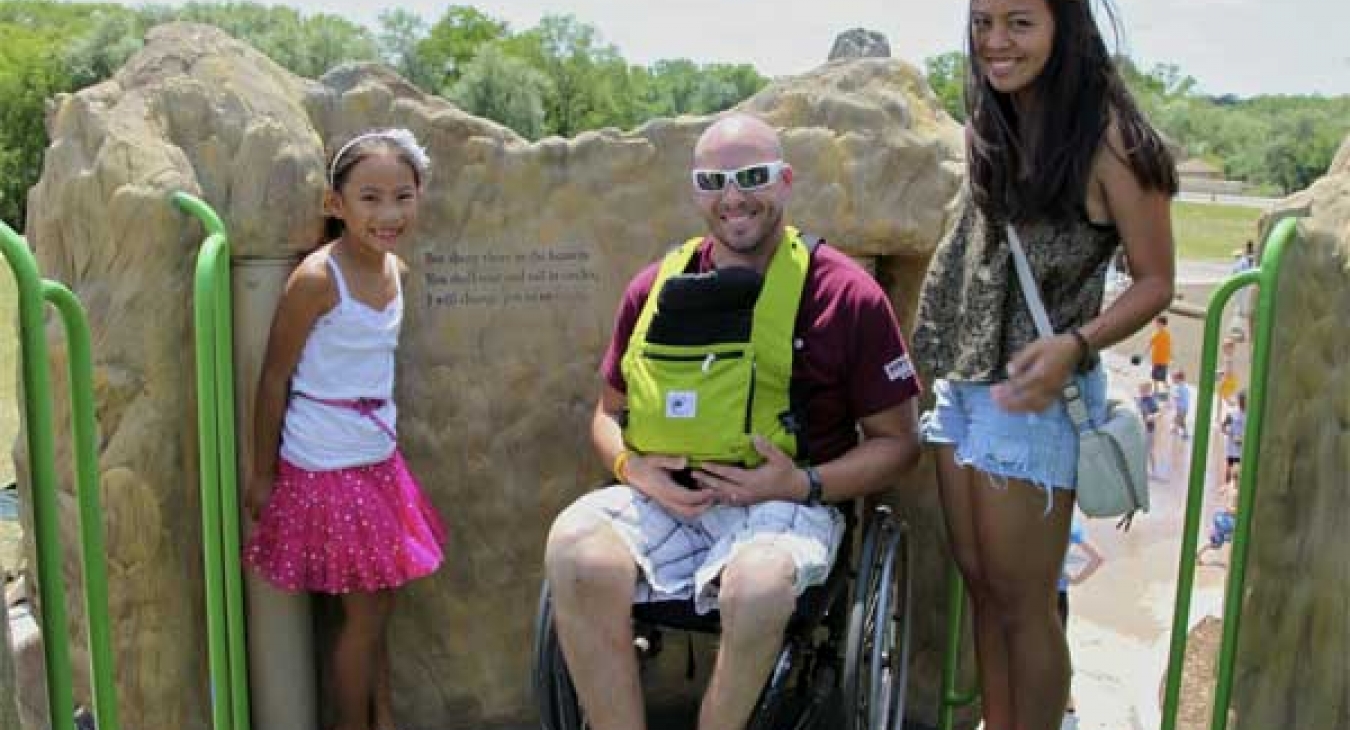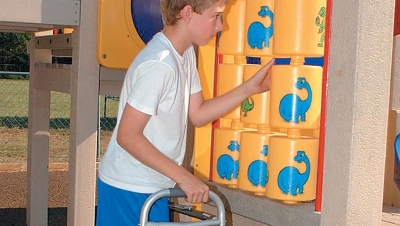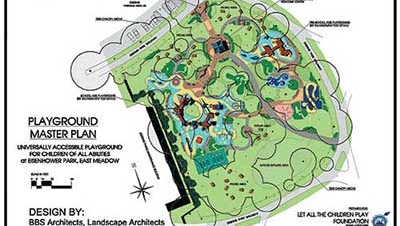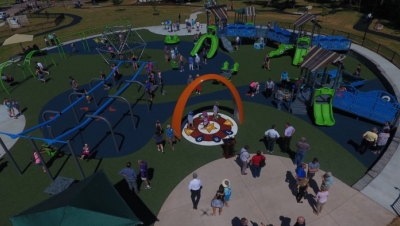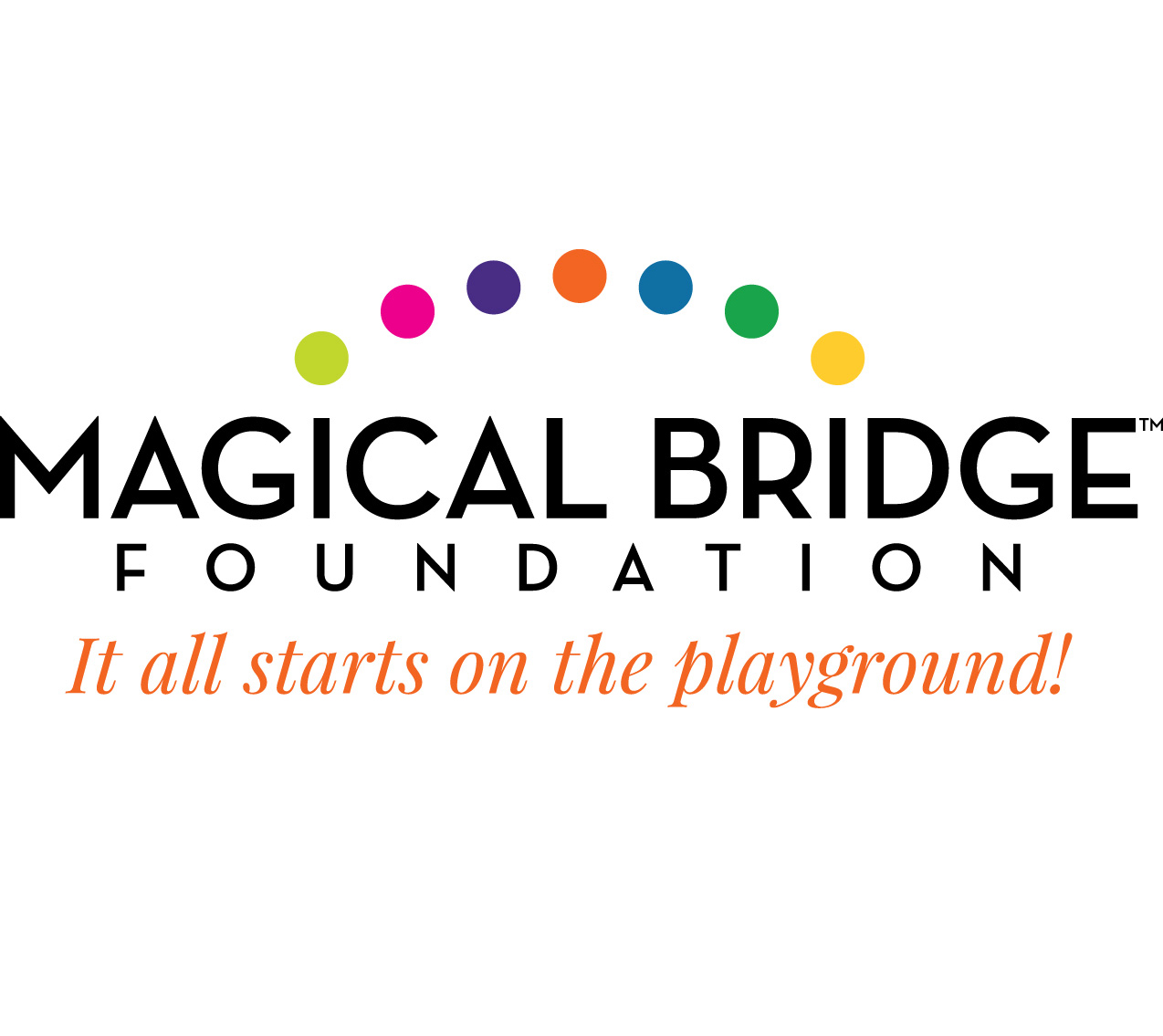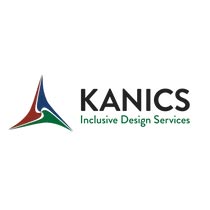Play is for everyone…at least it SHOULD be!
Imagine that you are going to a movie with your friends, you’ve heard it’s the most incredibly entertaining piece to come out in years, PLUS its in 3D, and you are so excited you are counting the days until the grand opening. The day arrives, you head to the theater, and although all of your friends get a pair, they run out of 3D glasses just as you enter the theater. As the movie commences, you hear the shrieks of surprise, watch as your friends jump out of their seats exclaiming at the special effects, while you just sit there watching what looks to you like a blurry screen, missing all of the fun because the equipment you needed in order to actively participate wasn’t available.
Doesn’t sound like much fun, does it? However, this perfectly describes the experience of a child, family, or caregiver when they go to a playground that hasn’t been thoughtfully designed to accommodate all people. While we often think of play in relation to children, we must also consider parents with disabilities, grandparents who are caregivers, and the public at large who may not be able to access or use playground or recreation equipment if it is not thoughtfully designed. There is a quote in Me2, The 7 Principles of Inclusive Playground Design, which sums up the issue by stating that the fault lies not with the person, but with the environment for creating the barrier. People, through no fault of their own, are often unable to enjoy the playground, or other recreation amenities, because the equipment hasn’t been adapted to their needs. This becomes even more important when one considers that youth with physical disabilities have a 4.5 times higher rate of inactivity and that children with physical and developmental disabilities are significantly more likely to be obese, according to studies conducted on health risk behaviors for children with disabilities in the last decade.
How do we ensure accessible, inclusive environments? Luckily, the trend of inclusivity on the playground is growing, but how do you know the environment you build meets the spirit and functionality of true inclusion? It’s more than just providing a route to “get there,” a truly inclusive space supports a variety of physical and social participation, maximizing opportunities for mutual respect and acceptance, while minimizing fatigue and unnecessary difficulty.
Think beyond mobility-The ADA is a great start, but focuses mainly on access and physical disabilities. There is a great diagram in Me2, illustrating statistics from the US Department of Education, which shows that for every 1000 people between the ages of 3 and 21, one will have a physical disability. How can we ensure participation and equitable play for the other 84? A well-designed play space should meet the needs of the whole child, including social, cognitive, communicative, sensory, and yes, physical applications.
Envision the conduit-Inclusive environments are just like an electrical conduit, it doesn’t matter how carefully planned and executed the different parts are, if any one part is broken, then the entire conduit is broken. Is the play environment near accessible parking? Is there an accessible path from the parking lot to the play area? Is there an accessible curb or ramp to enter the play area? (This is especially important if curbs are being used to contain loose fill surfacing.) Are there accessible routes of travel throughout the environment and onto the play structure to allow unlimited access and participation? I once visited a recreation area where every care was taken along the way, except the playground surfacing was sand, rendering it difficult to negotiate for people with many types of physical disability, and completely impassible for those using a mobility device. What about once you get to the play environment, are there a variety of ways to participate?
Trust an expert-When planning an inclusive play space, work with providers who partner with experts in the field of disability and can provide you with plans that provide play and recreation spaces that go beyond access to promote inclusion. Ask for resources, references, and an explanation why the plan they are suggesting will be usable to the greatest extent by the greatest number of people. The planning phase is the time to ensure the environment is truly inclusive, not after it is built.
Consider programming (events, activities, play workers)-Once the play and/or recreation space is built, how will you promote it? Are there centers for people with disabilities nearby or rehabilitation hospitals that can use the space for therapy (and maybe help you raise funds for the project)? Do you have play workers who can offer programming to promote character development and understanding between children of all abilities? Have you considered using the space for birthday parties or family celebrations, and if so, have you included accessible picnic tables and seating so people can participate comfortably?
One of my favorite examples of inclusive play is the playground called “A Dream Come True” in Harrisonburg, VA. This monumentally large play area began as the vision of a Girl Scout group and their leaders to create change, empower others, and teach skills in their community. The grassroots fundraising and contributions of a multidisciplinary committee resulted in an amazing play space that provides equitable play to intergenerational groups of people in Harrisonburg and surrounding communities. At one entrance to the play area, parkgoers pass under a colorful arched rainbow, where playful circles embedded in the surfacing provide visual cues to the audible sounds one hears when they step or roll over a circle. It is magical to watch children and families discover this unusual aspect, and go back and jump on the circles again and again, each time being rewarded with a fun, playful sound. Elevated and ground level activities found throughout the environment provide a wide variety of play types that promote sound, touch, movement, and visual stimuli so that people of all abilities have a variety of ways to participate in play events at their level of comfort. A shaded picnic area provides enjoyable places to sit, observe, enjoy the space, and hold events.
Adaptive swing seats are included in the swing bays to promote inclusion while giving children additional support to maintain a neutral body position so they can stay active for longer periods. The entire environment provides graduated levels of challenge, so that children have events they are comfortable with at their current skill level, as well as new ones to aspire to as they master and develop skills.
Another fantastic example of inclusive play is found at Hart Park, in Wauwatosa, WI. This environment uses theming to promote the native heritage of the area, while providing opportunities for children and families to engage in a variety of play adventures. Theming is a great way to promote inclusion, as it gives children with disabilities the option to be in “positions of power,” at the helm of a ship, in the driver’s seat of a race car, or in the case of Hart Park, leading the river excursion in an authentically designed dug out canoe or “climbing” the huge tree that makes up the main part of the play structure.
It is always amazing to watch the levels of participation at a thoughtfully designed inclusive play space. They become not only a destination for the community in which they are located, but also an attraction for surrounding areas that may not have such an environment. But most amazing is the active behaviors exhibited by people with a wide variety of abilities. I once heard a city official exclaim at an inclusive playground grand opening, “This reminds me of that movie Field of Dreams and the line ‘if you build it, they will come.’ I had no idea we had so many citizens who needed a space like this. I guess it just took building it to create something that was useful enough to encourage everyone to come out and play!”
How many citizens in your community aren’t coming out to play because there isn’t an environment that encourages them to do so? What are you willing to do to help all people enjoy and participate in active behaviors? Lets start a movement together. I welcome your e-mails, thoughts, challenges, and activism. Tell me how you plan to help promote inclusive play, and I’ll send you complimentary copy of Me2 to help get you started. Let’s work together and change the footprint of play so that people have a place nearby to be a kid, to enjoy time as a family, to just get out and play.


